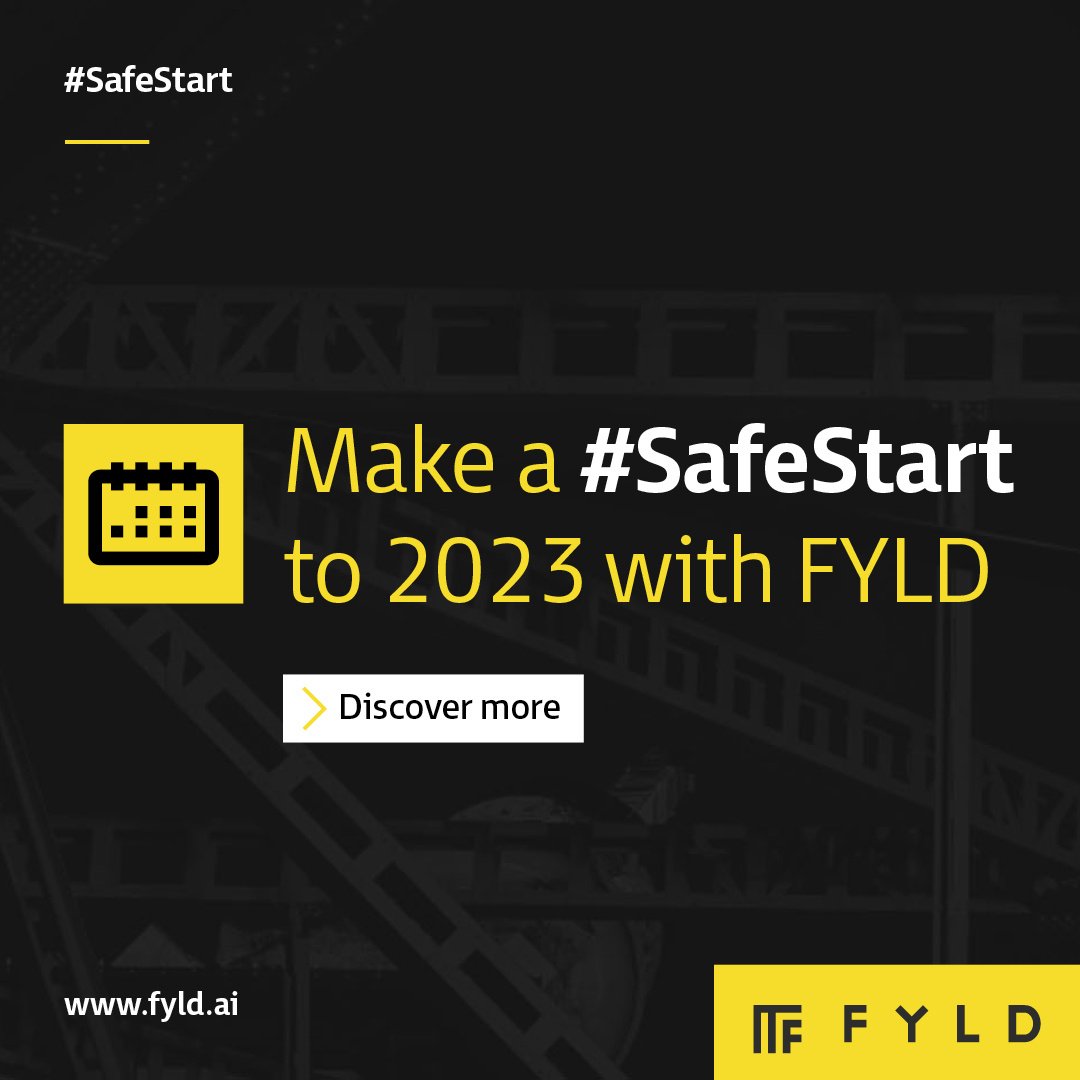FYLD’s tips for enabling a safe start to 2023
When returning to work after the festive period, it’s vital that safety standards don’t take a backseat. Striving for continual improvements to safety standards is crucial, no matter how established individuals or processes are within an organisation.
The Health and Safety Executive (HSE) states that workers are as likely to have an incident during their first six months in a new job as they are for the entire duration of the rest of their working lives. And with the latest HSE annual report stating that the annual costs of workplace injury in 2019/20 reached £7.6 billion, and that six million working days were lost due to non-fatal workplace injuries, there are substantial operational consequences to not prioritising a safe start to your career and year.

What makes a Safe Start?
Safe Start activities are a great way to engage fieldworkers in a safety culture as they begin their work after the holidays. January typically has the worst injury stats of any month in the year, and there are many factors that need to be considered when getting back into work in the new year.
Ensuring safety is the main focus from the first day employees return can help change January’s injury trends and help companies send workers home safely to their families at the end of every shift.
Here are some examples of initiatives that could be included in Safe Start campaigns:
- Dedicated time to get back into the ‘safety first’ mindset
Disrupting normal routines and activities to pause and discuss safety and wellbeing can shift the atmosphere of a returning work force from lethargy to focus. - Leadership emphasising priorities in the field
Having senior members discuss the focuses on safety and wellbeing following the festive period can unite teams and make sure everyone is working towards the same goals. - ‘Toolbox talks’ to encourage hazards and control measures being considered
Starting each shift with a safety talk and reminder of processes is a great way to promote a safety mindset for the day. - Share January injury trends with field teams to highlight high injury rates
A visual reminder of the increased safety risk at the beginning of the year can motivate workers to avoid becoming the next statistic. - Offer interactive communication forum
Getting workers involved in talking about how they feel and how to focus on safety helps to break the monotony of tick box exercises that can be done without thinking.
FYLD powering safety in the field
Video risk assessments (VRAs) are at the heart of FYLD’s platform, helping workers to identify hazards and implement extensive control measures in their everyday activities. By using FYLD, fieldworkers get out of vehicles and site huts and onto the worksite and undertake a VRA that is so much more than a paper-based or electronic tick box exercise. By interacting with their surroundings, fieldworkers become aware of the real hazards to themselves, their team and the public.
Communication is at the heart of FYLD’s platform. Transparent communication enables efficient safety operations across organisations. Team members who engage with each other effectively will reap the best results and learnings for the future of safety. You can read more about communication’s role in futuristic safety here.
Expert opinion…
FYLD’s Chief Futurist Karl Simons OBE, commented: “Prioritising safety when returning to work cannot be understated. Getting into the right mindset immediately means the collective industry will be in a position to make a real impact on everyone’s safety.
“Within every major client or contractor business I led health and safety in, January was always the month where most injuries occurred and therefore required the most attention to get things right. I firmly believe that following any significant period of downtime, leadership needs to double down on the correct training, interventions and support for workforces.
“FYLD’s platform enables efficient and robust communications across teams while providing world class video risk assessment capabilities – ensuring workers are aware of their surroundings and keeping safe.”
Get in touch to find out more about how FYLD’s point-of-work risk assessments can help you improve worker safety for your field teams.






